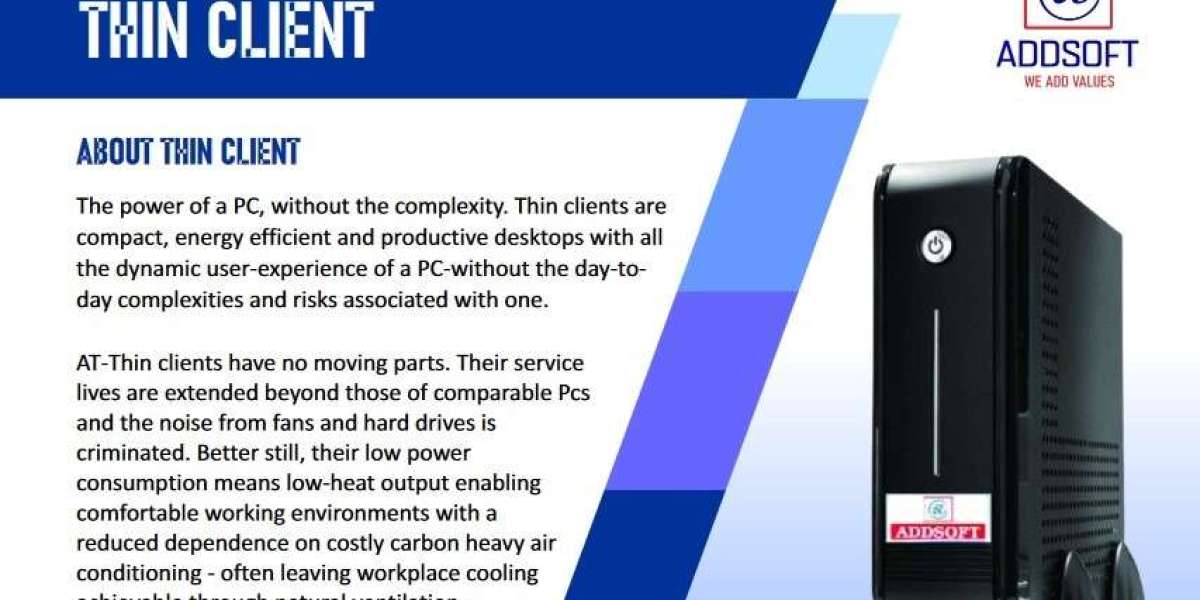In the evolving realm of modern computing, thin clients have emerged as a pivotal solution, offering a streamlined and efficient alternative to traditional desktop setups. Unlike conventional PCs that rely on local processing power and storage, thin clients connect to a central server or cloud infrastructure, transferring much of the computing tasks to the server-side. This article delves into the concept of thin clients, their numerous benefits, and their significance in contemporary computing environments.
Understanding Thin Clients:
Thin clients are lightweight computing devices designed to access applications and data stored on a remote server or cloud. Unlike bulky desktop computers, thin clients feature minimal hardware components, including a CPU, memory, and networking capabilities. This simplicity in design and functionality makes them highly cost-effective to deploy and maintain, especially in large-scale enterprise environments.
Key Characteristics:
- Minimal Hardware: Thin clients have fewer hardware components, which reduces the need for extensive maintenance and upgrades.
- Centralized Processing: All intensive computing tasks are handled by a central server, ensuring that the client devices remain lightweight and efficient.
Centralized Management:
One of the standout features of thin clients is their centralized management architecture. With processing and data storage managed on the server-side, IT administrators can effortlessly manage and update software applications, security protocols, and system configurations from a central location. This centralized approach simplifies maintenance tasks, ensuring consistency and uniformity across all thin client devices within the network.
Benefits of Centralized Management:
- Ease of Updates: Administrators can deploy updates and patches to all devices simultaneously, reducing downtime and ensuring that all clients run the latest software.
- Uniform Security Protocols: Centralized management allows for uniform implementation of security measures, reducing the risk of vulnerabilities across the network.
Enhanced Security:
Thin clients offer an enhanced security posture by storing sensitive data on the server or cloud rather than on individual devices. This significantly reduces the risk of data loss or theft due to device compromise. Additionally, thin clients can leverage built-in security features such as encryption, authentication protocols, and remote access controls to further fortify data protection and ensure compliance with regulatory requirements.
Security Advantages:
- Data Centralization: Storing data on a central server ensures that it is better protected against theft and loss.
- Advanced Security Features: Features like encryption and multi-factor authentication enhance the overall security of the system.
Cost Savings:
Compared to traditional desktop computing solutions, thin clients offer substantial cost savings. By centralizing hardware resources and minimizing the need for expensive endpoint hardware upgrades, organizations can reduce upfront capital expenditures and ongoing operational costs. The longevity of thin client devices is also often extended due to their simplified hardware requirements, resulting in a lower total cost of ownership over time.
Economic Benefits:
- Reduced Hardware Costs: Thin clients are less expensive to purchase and maintain compared to full-fledged desktop computers.
- Lower Operational Expenses: Centralized management reduces the need for extensive IT support and maintenance.
Environmental Sustainability:
Thin clients contribute to environmental sustainability efforts by consuming less energy and generating fewer electronic waste materials compared to traditional PCs. With their low power consumption and longer lifespan, thin clients help reduce carbon footprints and promote eco-friendly IT practices in organizations of all sizes.
Eco-Friendly Aspects:
- Energy Efficiency: Thin clients use significantly less power, which helps in reducing energy consumption.
- Reduced E-Waste: Fewer components and longer device lifespans mean less electronic waste is generated over time.
Conclusion:
Thin clients represent a compelling option for modern computing environments seeking efficiency, security, and cost-effectiveness. By offloading processing and storage to centralized servers or cloud infrastructures, thin clients offer simplified management, enhanced security, and reduced total cost of ownership. As businesses continue to embrace digital transformation initiatives, the adoption of thin client technology is set to play a crucial role in shaping the future of workplace computing.



